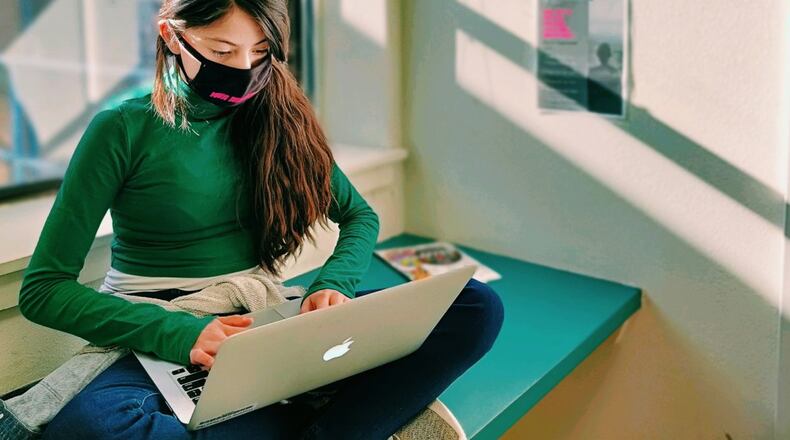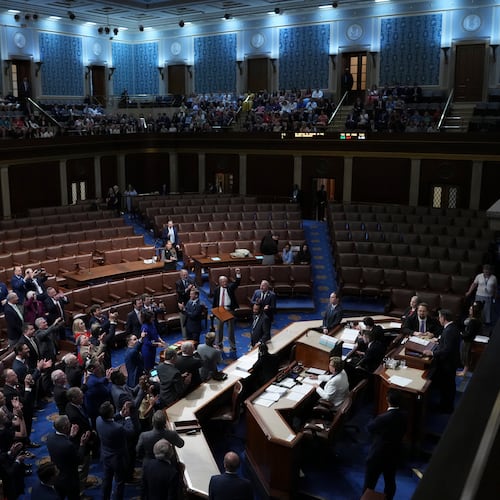There’s no going back.
That is the consensus emerging from education leaders across the country as the nation enters a second year of schooling in a pandemic.
In Arizona, for instance, a public school district is looking to become a service provider for parents who have pulled their children out to home-school them. In Oklahoma, students are having a say in where and when they learn. And educators everywhere are paying closer attention to students’ mental well-being.
“None of us would have ever wanted to go through this,” said Deborah Gist, the superintendent of schools in Tulsa, Okla. “We have a chance now to make it something that will change teaching and learning forever for the better.”
At the outset of the pandemic, schools nationwide had to make swift and drastic changes in public education to keep students learning. And while teachers, principals, district leaders and parents forced to shift to virtual learning are eager for an end to the emergency measures, many are already looking ahead and considering which education solutions have worked well – and what parts of public schooling should be permanently altered.
Credit: contributed
Credit: contributed
In many districts, educators are reconsidering old norms about schedules and thinking about how to incorporate more community-based learning.
Some educators are listening more closely to student and parent voices, and a few are even going door-to-door.
‘a level of independence’
Even before the pandemic forced its schools to go remote, the Tulsa Public Schools district was piloting ways to move education out of the classroom and into the community.
One program, called Tulsa Beyond, gave a small group of students at several district high schools — in partnership with educators and community members — the opportunity to design and implement a new vision of what high school should look like.
The resulting three models varied, but each called for real-world, hands-on, work-based learning experiences.
The new models had been operational for a semester when COVID forced them to pause. But the pandemic also opened a door: With schools closed, “All of a sudden [students] got a level of independence, time management and decision-making autonomy that a traditional school usually doesn’t afford,” said Andrea Castañeda, the district’s chief innovation officer.
Now, the district is determined to sustain the program and create new, richer opportunities that could eventually take all students outside school more often.
‘a time to reexamine education’
In Arizona, schools across the state have also began to look creatively at education solutions, said Emily Anne Gullickson, CEO and founder of the nonprofit, A for Arizona, which funds innovation in public education.
Her organization has given grants of $20,000 or more to schools and districts to launch new programs. The proposals included after-hours study groups for third-graders to work with a qualified teacher or tutor to stem learning loss during the pandemic; an outdoor learning hub to reengage students who weren’t attending online classes; and an in-person small learning community with social and emotional supports for students suffering from trauma.
Remote and project-based learning have prompted some educators to revisit the school day.
In Tulsa, two of the three Tulsa Beyond high schools are designed so that students gradually take control over their own schedules. “[They] imagined an approach that as kids moved from ninth to 10th to 12th grade, we relinquish more scheduling control to them,” said Castañeda.
In Arizona, Gullickson sees staying power in these education solutions, because they have been built specifically to address student and community needs.
“Parents recognize that this is the time to reexamine and reimagine education and what those possibilities are for students,” Gullickson said. “I don’t see parents wanting to go backwards.”
‘a huge transformation’
In a survey of more than 375 school district leaders and charter management organizations from around the country about the changes the pandemic has wrought, educators said Zoom, Facebook Live and YouTube have been effective, low-cost ways to connect with families. And moving meetings online has increased community participation and engagement.
Dawn Ray, a speech-language pathologist at Arbor Hill Elementary School in Albany, New York, said she and her colleagues have discovered distance learning has improved communications with families.
“Parents are a bit more timid about coming into the building,” she said. But now, “we’re invited guests into their homes.”
The online format has allowed her more time to chat with parents once her work with children is finished, which allows her to respond to their questions and bolster the school-home relationship.
Since COVID, educators have been building social and emotional learning into the virtual and in-person school day, including time for journaling, mindfulness exercises, and circle time focused specifically on checking in on students’ mental health.
Educators at the Phoenix Union district, an all-high school district in Phoenix, Ariz., have paired an adult with every student to ensure some form of one-on-one contact daily. In El Paso, Texas, the district is installing a districtwide online daily check-in system where students sign in on their phones or devices to say how they’re feeling, so educators can have an early warning of a student in need of help.
“If a child has three bad days, or they write a comment, ‘I’m lost’ or ‘I need help’ … that will be flagged and the district’s systems of support will kick in,” said Ray Lozano, the El Paso district’s executive director for student and family empowerment.
Teachers are also building reflection corners or peace centers into their in-person classrooms. Online, they’re offering breathing apps or books with reflection sheets that help students process feelings.
Yet, the challenges facing school leaders are overwhelming, and some are nervous that funding cuts or a return to old regulations designed for the traditional school model could thwart some of the recent innovations.
But Robin Lake, director of the Center on Reinventing Public Education, hopes that solutions that show promise will likely stick.
“This wasn’t just a snapshot in time,” said Lake. “It’s going to require us to be in a continual cycle of figuring out new and better ways to do things.”
Peggy Barmore writes for The Hechinger Report. This story is part of the Solutions Journalism Network, a nonprofit organization dedicated to rigorous reporting about responses to social problems. It originally appeared here.
About the Author
Keep Reading
The Latest
Featured




